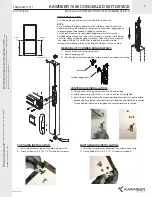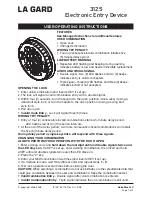
Chapter 3 Hardware Overview
National Instruments Corporation
3-5
DAQCard E Series User Manual
DAQCard-AI-16XE-50 has a unipolar input range of 10 V
(0 to 10 V) and a bipolar input range of 20 V (
±
10 V). You can
program polarity and range settings on a per channel basis so that
you can configure each input channel uniquely.
Note:
You can calibrate your DAQCard-AI-16XE-50 analog input circuitry for
either a unipolar or bipolar polarity. If you mix unipolar and bipolar
channels in your scan list and you are using NI-DAQ, then NI-DAQ will
load the calibration constants appropriate to the polarity for which analog
input channel 0 is configured.
The software-programmable gain on these cards increases their
overall flexibility by matching the input signal ranges to those that
the ADC can accommodate. The DAQCard-AI-16XE-50 has gains
of 1, 2, 10, and 100 and is suited for a wide variety of signal levels.
With the proper gain setting, you can use the ADC’s full resolution
to measure the input signal. Table 3-3 shows the overall input range
and precision according to the range configuration and gain used.
Table 3-3.
Actual Range and Measurement Precision, DAQCard-AI-16XE-50
Range
Configuration
Gain
Actual Input Range
Precision
1
0 to +10 V
1.0
2.0
10.0
100.0
0 to +10 V
0 to +5 V
0 to +1 V
0 to 100 mV
152.59
µ
V
76.29
µ
V
15.26
µ
V
1.53
µ
V
-10 to +10 V
1.0
2.0
10.0
100.0
-10 to +10 V
-5 to +5 V
-1 to +1 V
-100 to +100 mV
305.18
µ
V
152.59
µ
V
30.52
µ
V
3.05
µ
V
1
The value of 1 LSB of the 16-bit ADC; that is, the voltage
increment corresponding to a change of one count in the ADC
16-bit count.
Note:
See Appendix A
, Specifications,
for absolute maximum
ratings
.
















































